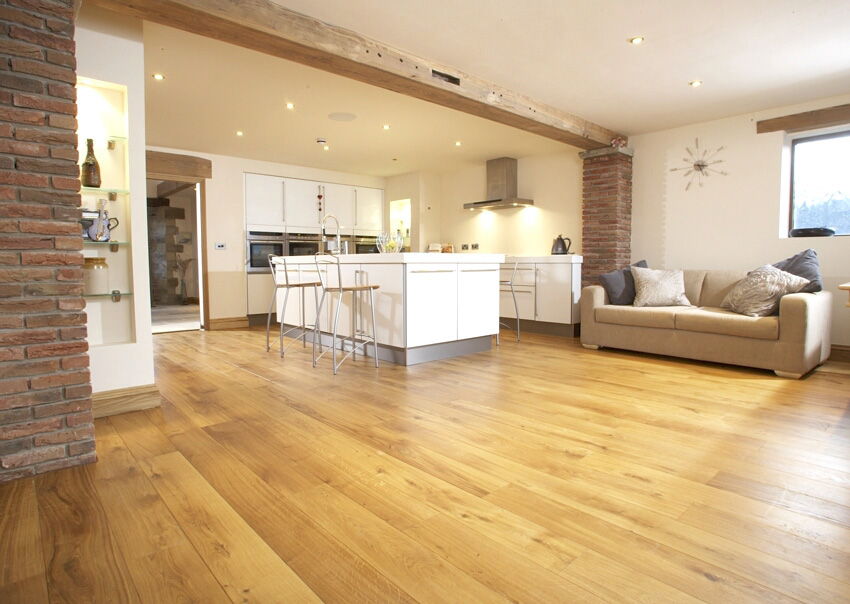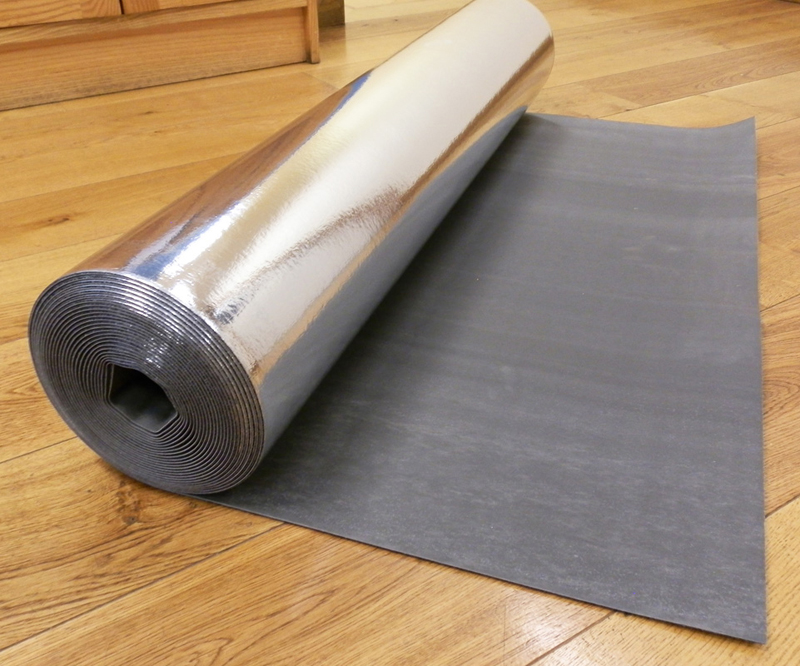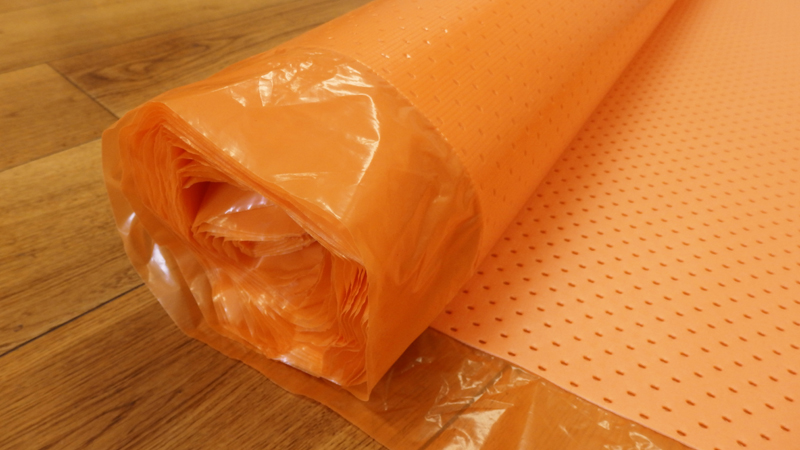Floating Solid and Engineered Wood Flooring
Our customers often ask advice about the best way to fit the wood flooring that they have bought from us. The advice we offer can vary depending on the type of flooring purchased and also what the customer is fitting the floor onto (the subfloor). This mini guide offers guidance for floating our own solid and engineered wood floors. The term "floating" means that the floorboards are not secured to the subfloor but instead are laid using a foam or fibre underlayment, offering an alternative to either mechanical fixing or gluing. Floorboards can be floated onto a solid subfloor such as concrete or existing timber floorboards.

Floating method for solid wood flooring
When fitting solid wood flooring we would recommend the use of an adhesive floor fitting foam underlay. First ensure that the subfloor is clean, dry and level, then lay a full layer of Visqueen (polythene DPM) over the whole floor overlapping on the joints by 8" and running slightly up the walls.
Roll out the adhesive foam underlay at 90 degrees to the run of the new floorboards with the plastic coated face uppermost. Leave a slight gap between rows of floor fitting foam. On the wall where you intend to lay the first board peel back approximately 500mm of the plastic top film exposing the glue. Onto this glue apply a spare sheet of the plastic top film and fold it towards you with the fold to the wall. Onto this separate piece place the first few rows of flooring, locked tightly together and leaving an adequate expansion gap round the perimeter of the room. Carefully, pull out the loose piece of plastic sheet and affix the boards firmly to the floor fitting foam. Once this is done, lock in the next row of boards and then peel back the main plastic sheet by 75% of the width of the board (to allow the next row to be laid without sticking), continue to do this across the room. PLEASE NOTE: The edges of a solid wood floor should not be glued together.
Floating method for engineered wood flooring
When fitting engineered wood flooring where there is no underfloor heating installed, we would recommend the use of Timbertech2™ Silver Underlay (below). This 2mm underlay is quick and easy to install and offers thermal insulation, protects against moisture migration from the sub floor and also reduces impact sound and in-room noise.

If you are fitting engineered wood flooring over the top of an underfloor heating system, we would recommend the use of QuickTherm Vapour Wood Flooring Underlay (below). This 2mm underlay features a unique perforated design and ultra low tog value of just 0.303, helping your underfloor heating system work at its best. The underlay also has a built-in vapour barrier with overlap to inhibit moisture rising up from the sub-floor.

Before using either underlay, ensure that the subfloor is clean, dry and level, then lay the underlay of your choice at 90 degrees perpendicular to the way that the floorboards will run. Your engineered wood flooring can be floated above the underlay and glued together by running a small bead of PVA glue on the bottom of the groove joint and then pushing the boards tightly together.
For further advice on fitting and finishing your wood flooring call us on 01535 637755 or follow the link to download our free Hardwood Floor Fitting and Maintenance Guide.



